 Facebook
Facebook
 X
X
 Instagram
Instagram
 TikTok
TikTok
 Youtube
Youtube
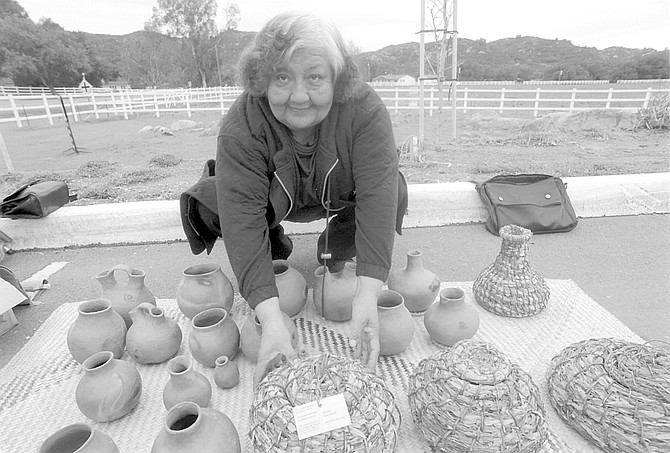
She said when she told Castaneda and Silva about the basket, they were excited and wanted to know if it was a fancy tamul basket. They were disappointed to find out it was only an open twined berry-gathering basket. Dozier says she presumes when Petra started making baskets, sumac was the weft, and the bundle was made of deer grass, but she said the overgrazing of the late 1800s took away the deer grass.
By Susan Luzzaro, April 6, 2000 | Read full article
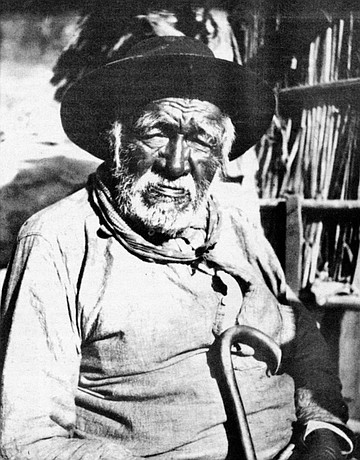
Davis observed the Indians during a period in which they were being forced to give up a seasonal hunter-gatherer life and adapt to a cash-based economy. When drought and the Great Depression struck in the 1930s, Davis’s journals show that he became something of an angel to the poverty-stricken bands in the Mesa Grande area. May says Davis would often make rounds among the Indian families in a car or wagon andwould fill up their baskets with food.
By Neal Matthews, June 12, 1986 | Read full article
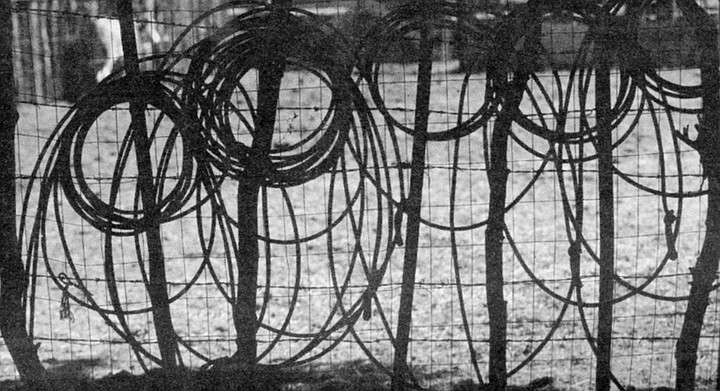
But the 90 resident and nonresident members of the Manzanita are a sovereign tribe, which paradoxically makes them subject to the Bureau of Indian Affairs, which is run by the Department of the Interior. This state of quasi-sovereignty has long been the status quo in federal-Indian relations (the original federal plan was to make the land west of the Mississippi “Indian Country,” a plan that was replaced by the reservation system).
By Laura McNeal, Sept. 28, 1995 | Read full article
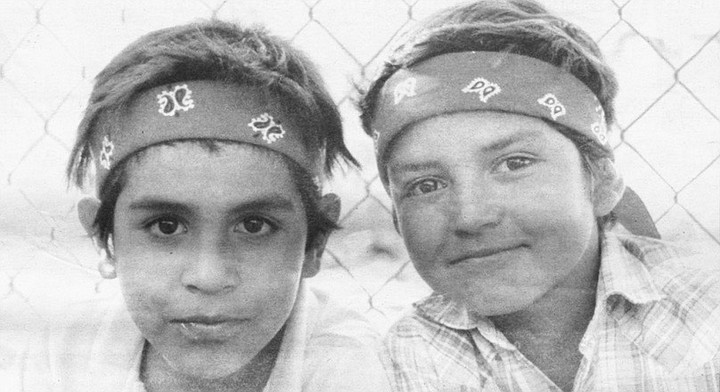
On the shores of the dry lakebed known as the Laguna Salada, about 250 Cucapa reside. Perhaps 50 — Kiliwa Indians live in an area known as Arroyo de Leon at the foot of the Sierra San Pedro Martír. The Kumeyaay Indians, whose territory extends as far north as Escondido, in San Diego County, inhabit four settlements south of the border. Finally, Paipai Indians, who bear many cultural similarities to the Indians of Arizona.
By Jeanette De Wyze, Sept. 19, 1996 | Read full article
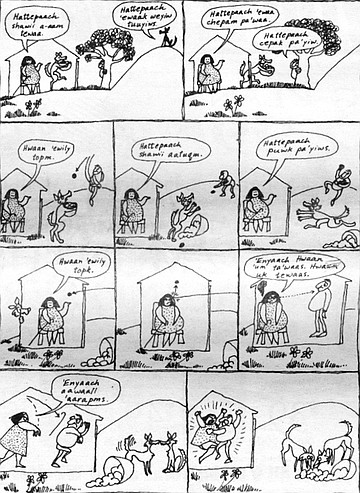
There is no generic word for ‘rabbit.’ You have a word for a jackrabbit, a cottontail, and a brush rabbit ’Cause they’re very distinctive-looking things. It’s the same with trees, Langdon says. No word means “oak” in general, but there are terms for all the oak varieties, of which at least six can be found in San Diego County. “Every Indian in San Diego County knows unerringly all the different kinds of oaks.”
By Jeanette De Wyze, Jan. 30, 1997 | Read full article
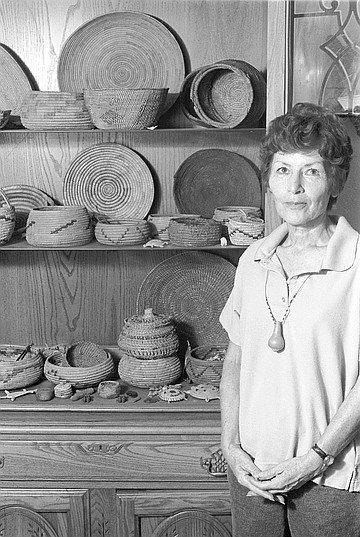
Adams remembers how the tribe danced with gourd rattles. “We never used drums” — at least not until tourists started expecting them. “That’s because when you put on a powwow nowadays, the people come to hear drums and singing and to see the fancy feathers, like Indians wear in Oklahoma. Those are what they associate with all Indians. But we didn’t use drums and never wore fancy feathers. We didn’t live in teepees or kill a buffalo.
By Jeanne Schinto, Sept. 28, 2000 | Read full article
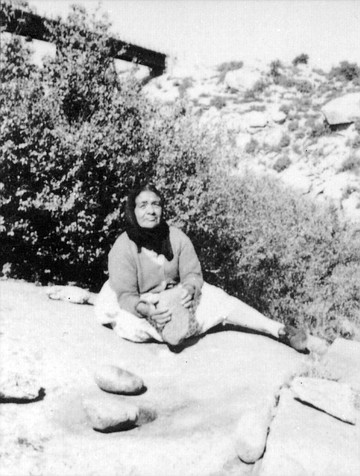
Her family fished and gathered shellfish in the Ocean Beach-Point Loma area. “There were lots of rabbits there, too. My grandfather used to tell the boys to eat rabbit eyes, because it would make them good hunters. To spear fish, they fixed cactus thorns to a long stick. For ropes, nets, and traps, they wove tall grasses and agave fiber. “We put the traps in the ocean, put a piece of rabbit meat in it."
By Jeff Smith, Aug. 16, 2001 | Read full article

Lace making depended upon the import of rust-proof steel pins and Belgian linen thread; a completely uniform, small-diameter thread. There were no contemporaneous local substitutes for these materials. Cash was required to buy the imports. Traditional Indian textiles used in Southern California were cloaks made of strips of rabbit skin interwoven with milkweed or hemp cordage, skirts of shredded bast fibers, and mats made of pierced rushes threaded together on four or five rows of cordage.
By Deborah Dozier, Aug. 30, 2001 | Read full article
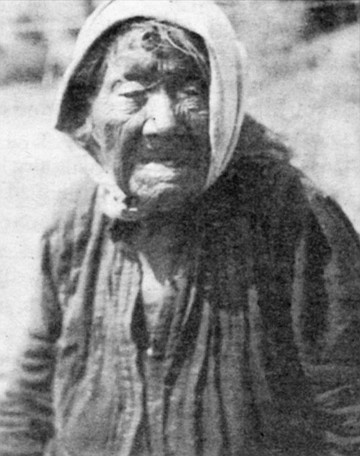
Often she recalls taboos now fading from the landscape. Mission Valley once had almost as many rattlesnakes as fleas. But it was bad luck to kill a snake, “.... If a person who has been bitten goes into my garden, all the plants will die.” Pregnant or menstruating women should avoid that person as well. On the plus side, someone bitten by a snake or black widow spider could have a much better garden than before.
By Jeff Smith, Aug. 30, 2001 | Read full article


She said when she told Castaneda and Silva about the basket, they were excited and wanted to know if it was a fancy tamul basket. They were disappointed to find out it was only an open twined berry-gathering basket. Dozier says she presumes when Petra started making baskets, sumac was the weft, and the bundle was made of deer grass, but she said the overgrazing of the late 1800s took away the deer grass.
By Susan Luzzaro, April 6, 2000 | Read full article

Davis observed the Indians during a period in which they were being forced to give up a seasonal hunter-gatherer life and adapt to a cash-based economy. When drought and the Great Depression struck in the 1930s, Davis’s journals show that he became something of an angel to the poverty-stricken bands in the Mesa Grande area. May says Davis would often make rounds among the Indian families in a car or wagon andwould fill up their baskets with food.
By Neal Matthews, June 12, 1986 | Read full article

But the 90 resident and nonresident members of the Manzanita are a sovereign tribe, which paradoxically makes them subject to the Bureau of Indian Affairs, which is run by the Department of the Interior. This state of quasi-sovereignty has long been the status quo in federal-Indian relations (the original federal plan was to make the land west of the Mississippi “Indian Country,” a plan that was replaced by the reservation system).
By Laura McNeal, Sept. 28, 1995 | Read full article

On the shores of the dry lakebed known as the Laguna Salada, about 250 Cucapa reside. Perhaps 50 — Kiliwa Indians live in an area known as Arroyo de Leon at the foot of the Sierra San Pedro Martír. The Kumeyaay Indians, whose territory extends as far north as Escondido, in San Diego County, inhabit four settlements south of the border. Finally, Paipai Indians, who bear many cultural similarities to the Indians of Arizona.
By Jeanette De Wyze, Sept. 19, 1996 | Read full article

There is no generic word for ‘rabbit.’ You have a word for a jackrabbit, a cottontail, and a brush rabbit ’Cause they’re very distinctive-looking things. It’s the same with trees, Langdon says. No word means “oak” in general, but there are terms for all the oak varieties, of which at least six can be found in San Diego County. “Every Indian in San Diego County knows unerringly all the different kinds of oaks.”
By Jeanette De Wyze, Jan. 30, 1997 | Read full article

Adams remembers how the tribe danced with gourd rattles. “We never used drums” — at least not until tourists started expecting them. “That’s because when you put on a powwow nowadays, the people come to hear drums and singing and to see the fancy feathers, like Indians wear in Oklahoma. Those are what they associate with all Indians. But we didn’t use drums and never wore fancy feathers. We didn’t live in teepees or kill a buffalo.
By Jeanne Schinto, Sept. 28, 2000 | Read full article

Her family fished and gathered shellfish in the Ocean Beach-Point Loma area. “There were lots of rabbits there, too. My grandfather used to tell the boys to eat rabbit eyes, because it would make them good hunters. To spear fish, they fixed cactus thorns to a long stick. For ropes, nets, and traps, they wove tall grasses and agave fiber. “We put the traps in the ocean, put a piece of rabbit meat in it."
By Jeff Smith, Aug. 16, 2001 | Read full article

Lace making depended upon the import of rust-proof steel pins and Belgian linen thread; a completely uniform, small-diameter thread. There were no contemporaneous local substitutes for these materials. Cash was required to buy the imports. Traditional Indian textiles used in Southern California were cloaks made of strips of rabbit skin interwoven with milkweed or hemp cordage, skirts of shredded bast fibers, and mats made of pierced rushes threaded together on four or five rows of cordage.
By Deborah Dozier, Aug. 30, 2001 | Read full article

Often she recalls taboos now fading from the landscape. Mission Valley once had almost as many rattlesnakes as fleas. But it was bad luck to kill a snake, “.... If a person who has been bitten goes into my garden, all the plants will die.” Pregnant or menstruating women should avoid that person as well. On the plus side, someone bitten by a snake or black widow spider could have a much better garden than before.
By Jeff Smith, Aug. 30, 2001 | Read full article
Comments